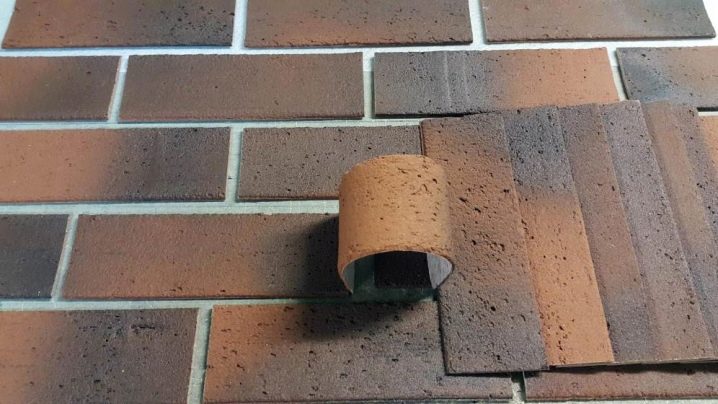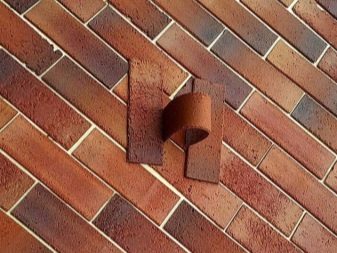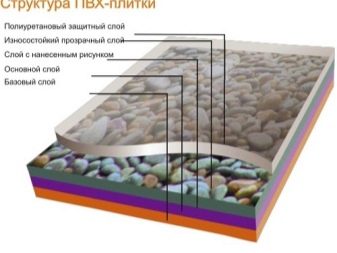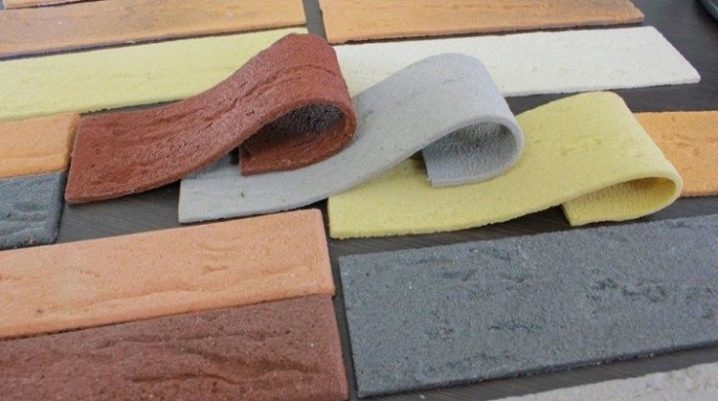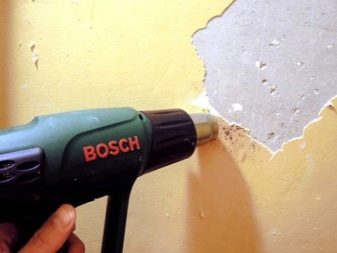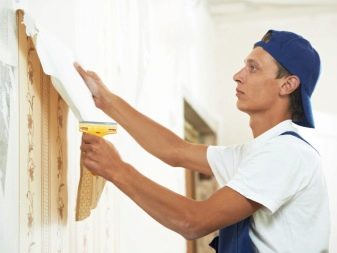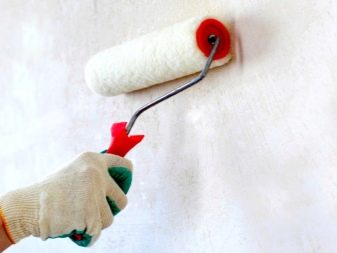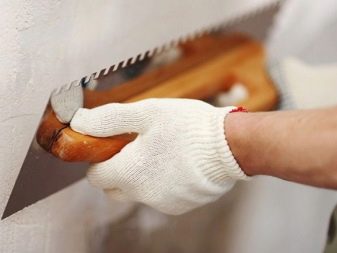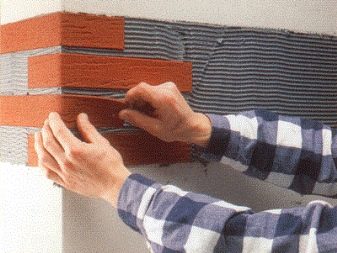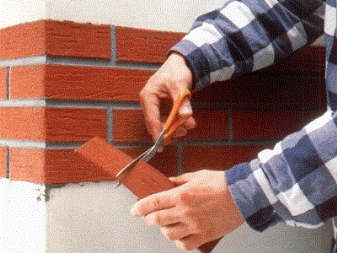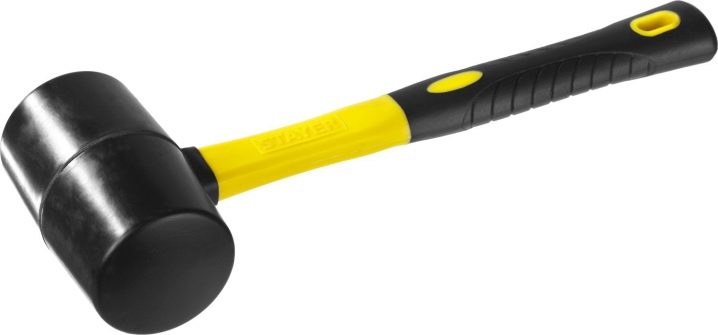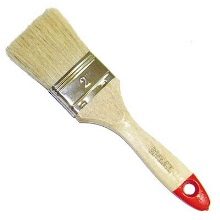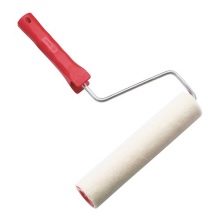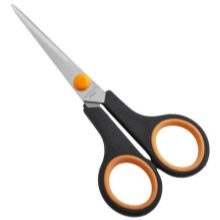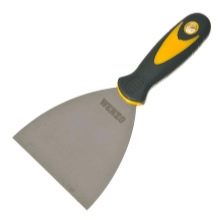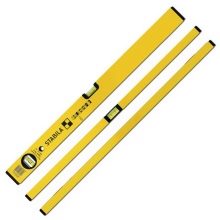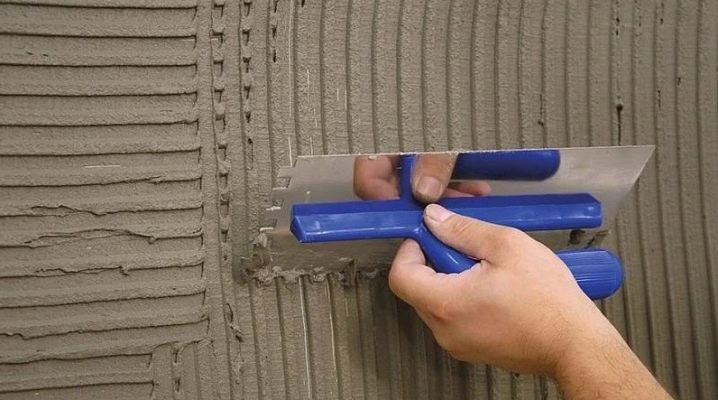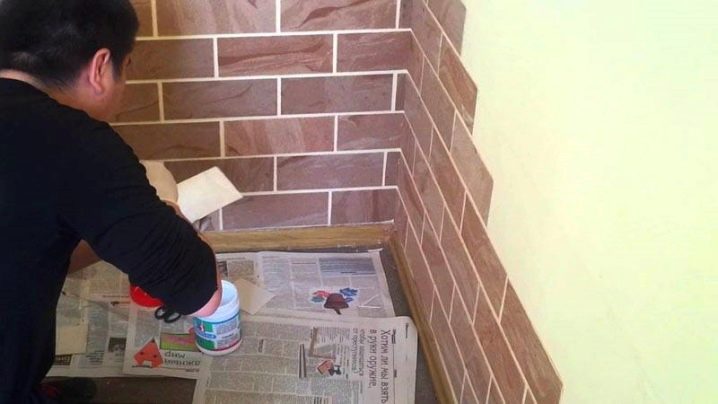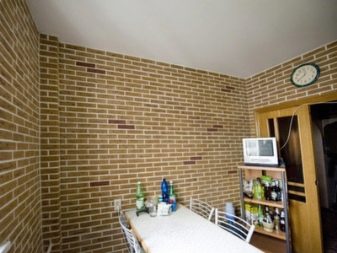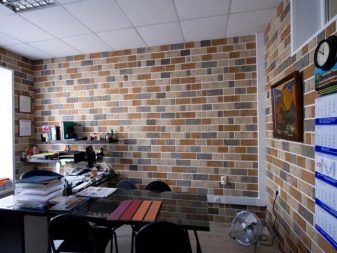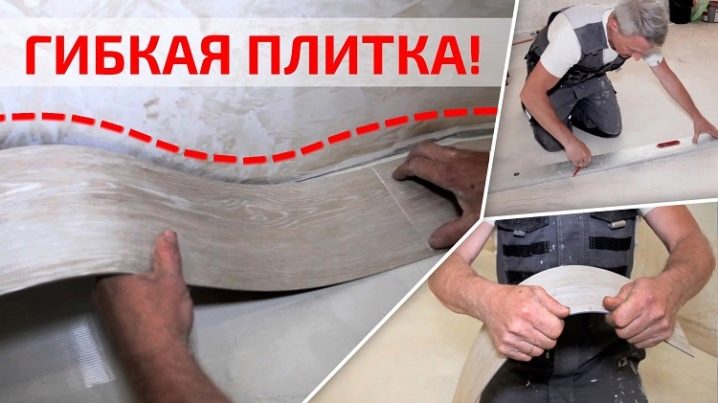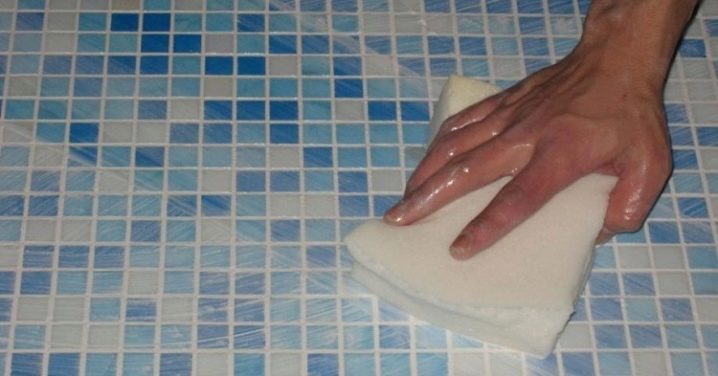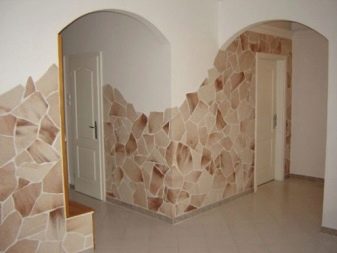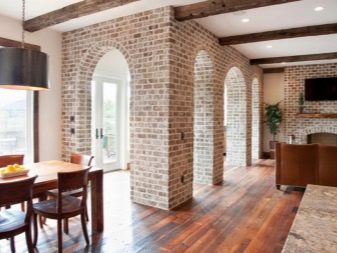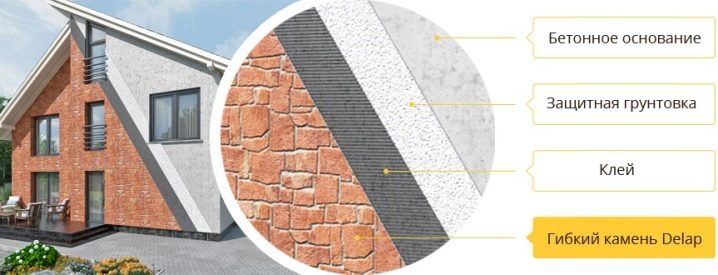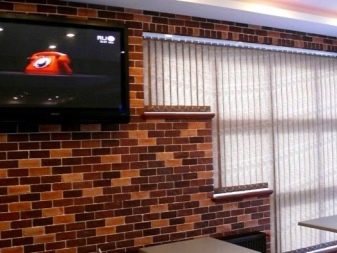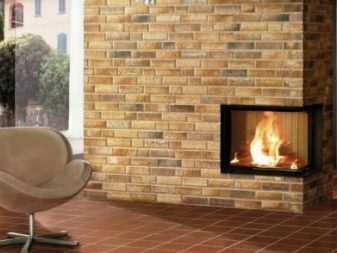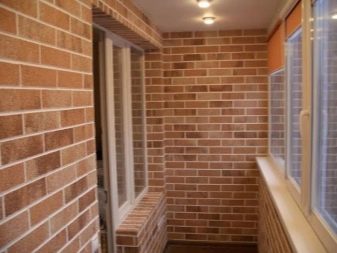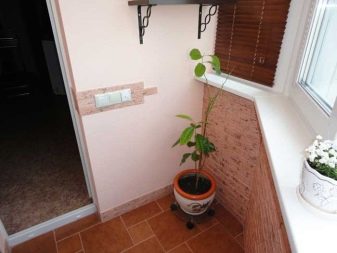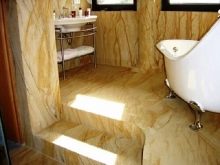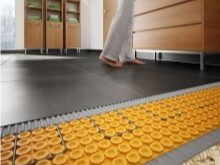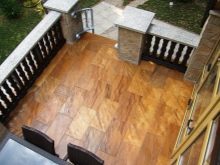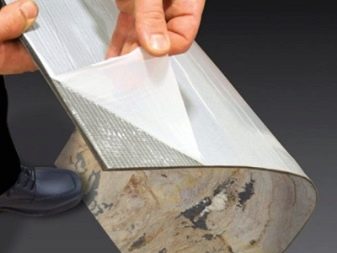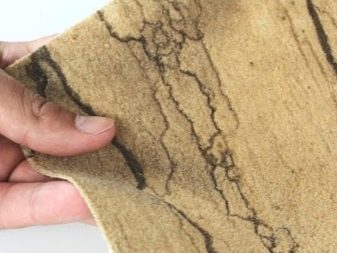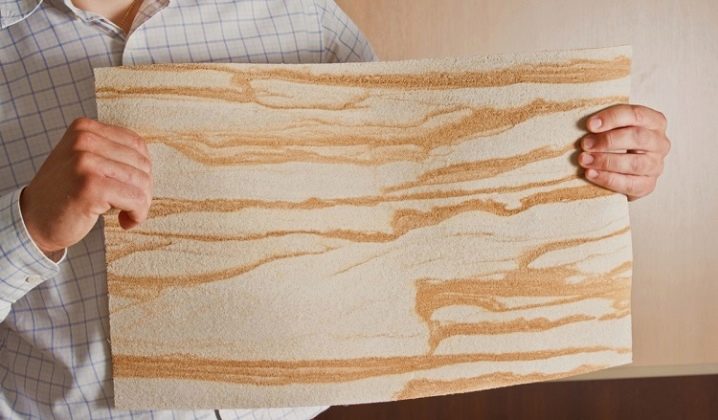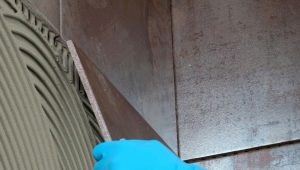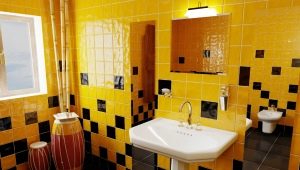Flexible tiles for interior decoration in the interior
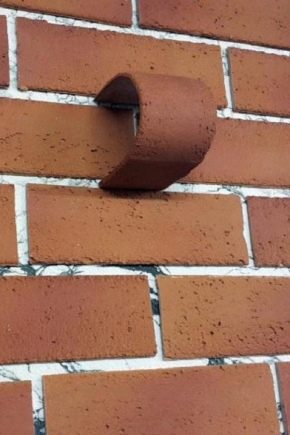
Flexible tiles today firmly occupied their niche in the market of building materials, it is actively used for interior walls. The popularity of this material due to the fact that it is easy to lay, it does not require special skills. The advantages can be attributed to the fact that it is convenient in operation, serves for a long time, its price is low. In addition, a variety of colors and patterns on its surface make it possible to apply it in any interior.
What is it made of?
When choosing any material for the repair of residential premises it is logical to ask what it consists of and what characteristics it has.
There are four layers in a flexible tile:
- base;
- balance;
- median;
- protective.
The first layer contains polyvinyl chloride, it acts as a substrate. In the second are fiberglass and plasticized stone chips.The next layer has a decorative load, there is a drawing on it. A polyurethane coating is applied to the last layer for protection.
Preparatory work
Flexible tile installation is easy. You can do it yourself, without the help of experts. The first step is surface preparation. To do this, completely remove the old lining and level the base, ridding it of bumps and cracks.
It doesn't matter what it is (paper wallpaper, ceramic tile, plastic panels, or simply painted surface). Then the walls must be leveled and covered with a primer. After that, you can tile the wall.
It is also put on the floor, used in a variety of areas, and even on the street.
Piling
Before you glue the tiles on the walls, you need to prepare all its elements. Attach it to the surface with a special glue or cement mortar. Then the surface is required to smooth out the roller. The next step will be the design of the corners and grouting.
In the end, you can apply varnish, which will become a protection and give the surface a shine.
This tile is convenient in the sense that it can be bent: with its help it is easy to decorate any surface, including corners. In the process of work, there must be a mallet (a special rubber hammer) nearby.It may be necessary to align the parts.
In the process of lining may also be needed:
- scissors and knife;
- tassel;
- roller;
- putty knife;
- building level;
- mixer for mixing glue;
- glue container and glue itself.
Glue should be applied with a spatula to small areas with a layer not exceeding 3 mm. Another nuance should be taken into account: a distance of at least 5 mm, but not more than 10 mm should be left between the individual parts. Otherwise the seams will be too wide, which will not improve the appearance of the wall.
Difficult moments
On the surface there are often obstacles in the form of pipes, complex corners and other elements. In such cases, you should proceed as follows. The tile should be pressed and held for 30 seconds, while additionally heated by a hairdryer. So it will become more elastic and more reliable. There are such moments that the tile does not work to put the joint into the joint. Then you can glue it overlap, with no need to coat the edges with glue.
Then the extra pieces can be easily cut with a knife.
Benefits
Besides the fact that this type of lining will save money, it has a number of advantages, including thermal and sound insulation.Waste when working with flexible tiles is practically not formed. Walls lined with it, receive a minimum of weight load.
There are other advantages:
- On the positive side, the fact that this material is durable and reliable, cracks and chips cannot arise on it should be attributed.
- If the tile is laid on the floor, even if a heavy object falls, it will not suffer, which is not the case with ceramic tiles.
- This facing material is conveniently transported due to its light weight.
- As for the operation, this tile can last for a long time (up to 10 years).
- The undoubted advantage is that the flexible tile is not afraid of temperature changes and frost. Snow and ice do not remain on its surface, the moisture evaporates quickly.
With regard to the effects of various chemicals, there are also no particular limitations. This tile can be washed with any detergent, it will not lose its appearance.
However, this does not mean that it can be rubbed with acetone and solvent. You should not do this (there is a risk of damaging the design and structure).
Opportunities
Extensive color spectrum, texture of the coating, which has flexible facing tiles,make it possible to carry out interesting ideas and bring a zest to the interior.
With this tile you can revet:
- door and window openings;
- columns and arches;
- various niches and ledges;
- walls in any rooms.
It can be used in combination with other materials. For example, you can arrange only the corners of the room, and on the rest of the space to stick wallpaper or cover with plaster. There are a lot of options. Perfect this building material for surface decoration in swimming pools, fountains and artificial ponds. This facing tile is successfully applied at repair of landings. Even the exterior treatment of the building is possible if decorative acrylic tiles are used, which have a special protective coating.
Brick finish
Today, the imitation brick finish is becoming increasingly relevant. It is made from a variety of materials: ceramic tiles, wallpaper, paint, plaster. And flexible tiles can also be used for these purposes. It is suitable for interior and exterior walls. Fireplaces, columns, arches, separate sections of the walls - absolutely any interior can be created with its help.
It is desirable to make a marking on the wall to indicate where the future “bricks” will be located. Often for a "brick" finish using EcoBrick tiles. It is made of cement, sand, acrylic polymers, colored dyes.
It keeps well on any surface, if you glue it with tile adhesive or use cement mortar.
A distinctive feature of this tile is the fact that it is attached to the joint butt, it does not need to grout. If it is necessary to cut off part of the tile, it is enough to hold the knife a couple of times, then break it off. By itself, this plate is solid. But if you need to create a decor on a round or angular surface, it is enough to heat the tile with a building hairdryer.
From its impact, it softens, it can be bent and laid as needed. At this procedure it is necessary to observe precautionary measures. From exposure to hot air, the tile heats up. Wear cloth gloves to prevent burns. This tile looks interesting on the loggia and balcony. With it, you can arrange paths in the garden. If you decide to finish the brick, designers recommend using other colors,as well as the texture of materials. One brick overload the room, decorating individual parts will look advantageous.
Flexible stone
Another interesting type of tile that has a large palette of shades from light to dark tones. With it, you can develop various design options, although it is better to combine it with other elements. Completely stone room will look gloomy. If one wall is made under a wild stone, others can be made one-colored light.
Well suited this option for arranging a bathroom. The surface before gluing can be treated with a special antifungal compound. Dies with parameters 210x50, 200 × 300, 600 × 300, 800 × 400 mm are considered as popular sizes. Flexible stone is also well suited for flooring, these products are compatible with the “warm floor” system.
Due to its characteristics, it retains heat well, such a floor will be beautiful, durable, comfortable.
The way of laying means two types: glue and without glue. Plain tiles are fixed to the floor with adhesives. Self-adhesive variety just laid on the floor, removing the protective layer from the substrate.In both cases, the coating is reliable, while the quality is equally high. There are options for tiles with glue strips, joints in the form of locks by type of laminate, special grooves on each side.
The tile is divided into classes. The lower class is designed for indoor use. Its service life is more than 5 years. For office space should take a higher class: it is associated with high traffic. There is a special coating that is used for sports fields and garages.
Reviews
Reviews say that many prefer flexible tile to other building materials precisely because it is easy to work with. If a defect has arisen during the work, a part of the tile can be removed from the wall without any problems and replaced with new fragments. Many when facing this tile were embarrassed by the fact that this type of finish can give the room some gloom. However, this can be avoided if you choose light shades of brick finish. Yes, and a dark version can be successfully combined with other types of finishes. So there is an opportunity to distinguish between functional areas in the room and make accents.
On how to properly lay flexible tiles, you can learn from the video below.
